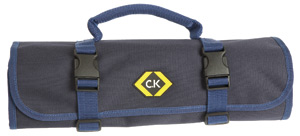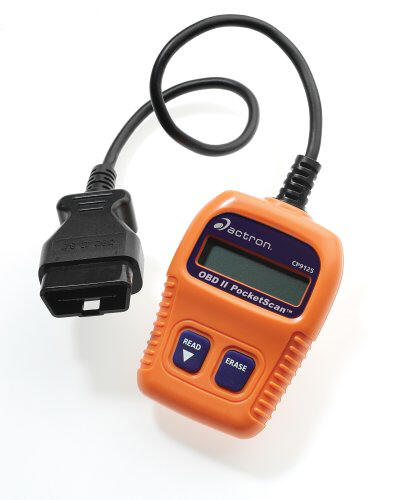|
Welcome
1. POWERCHAIR
ONLY:
Detailed Full PowerChair Related ONLY Menu HERE
2. VEHICLE
ONLY:
Detailed Wheelchair Accessible Vehicles ONLY menu HERE
3. EVERYTHING
ELSE:
Detailed Menu of Everything else HERE!
MY OWN
VEHICLES:
Dodge
Grand Caravan
VW Caravelle VR6
MY HOME
BUILT ULTIMATE POWERCHAIRS:
My
SLIGHTLY Modified
Improved Powerchair
Part
1 |
2 | 3
|
4 |
5 |
6
My VERY Modified Off Road & All terrain DO ALL
Powerchair!
Part 1
| 2 |
3
MISCELLANEOUS
POWERCHAIR RELATED:
What
Goes Wrong Power Wheelchairs
Powerchair Tyres
Drive your Powerchair by Radio Control
Powerchairs & Range
Off Road DO ALL Indoor & Outdoor Powerchairs
Off Road ONLY Outdoor Powerchairs & 4x4
Page
1
|
2
Manual or Electric Wheelchair?
Why ALL Powerchairs
NEED to be Off Road Capable!
Choosing a Suitable Powerchair
Wheelchair Width
BATTERY
AND ELECTRICAL (POWERCHAIRS & SCOOTERS + MOTOR VEHICLES):
Batteries for Both Vans & Power Wheelchairs
Inverters & Chargers
Very flexible charger!
Charging Batteries
Fast Charge Your Power
Wheelchair
Which batteries to buy
"DRIVE
FROM A WHEELCHAIR" VEHICLES:
Dodge
Grand Caravan 1
Dodge
Grand Caravan 2
Dodge Grand Caravan 3
Dodge Grand Caravan 4
Latest 2008 2009 2010
Disabled Converted Dodge Chrysler And Voyager Minivans
Chrysler Voyager
Entervan Diesel
Suzuki Wagon R
More Here
Mercedes Vito
-
soon!
Kia Sedona - soon!
INSURANCE:
Modified Disabled
Vehicle Insurance
Breakdown Cover
USED VEHICLES & OTHER
EQUIPMENT:
Disabled Adapted Cars
WHEELCHAIR TRANSPORT
& DRIVE BY TRANSFERRING:
VW Caravelle
Dodge
Grand Caravan can be used to transport up to 4 Wheelchair Seated Occupants
Fiat Doblo
Renault Kangoo
-
soon!
Citroen Berlingo - soon!
Citroen Dispatch
- soon!
Kia Sedona
-
soon!
Volkswagen Sharan
Mercedes Vaneos
Toyota Hiace
Fiat Multiplas (Wheelchair
passenger travels in the front)
Kangoo ASSIST (wheelchair
passenger transfers & drives)
ESSENTIAL DISABLED
EQUIPMENT STUFF:
Understanding
Grabbers
Puncture proof tyres
Run Flat tyres
Tyre Weld Aerosol
Fuses!
Spare Key
Wheelchair Ramps
Small Generator
Tools!
>
VEHICLE ADAPTATIONS:
Control
Systems etc
Hand Controls Manual
Hand Controls Electronic
Van / Car Door openers
Van / Car Wheelchair Tie Downs
OTHER STUFF:
Used Disabled Equipment for sale
How to lose weight FAST!
Email about modifying powerchairs
Keep it looking new 1
2
My Accident!
Climate Change
Electric
Cars are a Joke!
Disclaimer
& About Me
Site
Map
Contact
Links
|

Tools you
should always carry with you if you rely on your vehicle and powerchair to get
you home.
Things
break. Come undone, get bent and sometimes need changing. The
things that can go wrong with both our Power Wheelchairs, our adaptations like
ramp systems etc and also with the vehicle itself can often be repaired easily by
either yourself, a carer or by a helpful passer by. IF you have the right tools
handy!
|
|
Being stuck when disabled
and relying totally on your Power Wheelchair or Disabled Adapted
Vehicle to get you home ISN'T an option. So while its a good plan for everyone
to do this for us that cannot walk its essential!
The sort of things you need with you will be pretty simple generally.
But you do need some basics! If you have to swap a front castor wheel on
your powerchair, or remove a part to straighten it after a bump, then you need
to have some suitable tools. Same with battery terminals and any other bits that
may need to be tightened up like wheels or control pod.
With the vehicle itself
you need to make sure that you have a bunch of things for repairing annoying
things that fall off (the release button on my wheelchair tie down springs to
mind!) or fail.
But also some other spanners and screwdrivers to be able to
change a fan belt or swap a wheel or maybe fix a small wiring issue or whatever
goes wrong. In my own van I had to adjust the ramp slightly to allow the door to
close the other day after lowering it on to a kerb that was too high... I would
be stuck without a Posi-drive screwdriver and some imperial Allen keys... But
fortunately I had these with me.
These kinds of things are easy to fix if you have the basics.
And if we don't look after ourselves nobody else will.
 First of all check the tool kit that comes with your vehicle
-- if any. No point duplicating what you have already. And check the spare wheel
condition, inflation, and the Jack and that it works and is the correct one!
(been there...) First of all check the tool kit that comes with your vehicle
-- if any. No point duplicating what you have already. And check the spare wheel
condition, inflation, and the Jack and that it works and is the correct one!
(been there...)
While you are doing that check you have all the right
tools such as the locking wheel nut key, the wheel brace and the handle for the
jack. Check what tools you need if any to access all the
fuses in your vehicle.
|
Some of these reside in strange places like behind panels and
under dashboards which require a screwdriver or Allen key to get to. Some are
not in your vehicle handbook as they are additional ones that support your
ramps, suspension lowering systems, door openers and wheelchair tie downs. Know
where they all are if you want to get home!
A quick list of what I have
may help. Customise this list to suit your own situation.
|
|
-
A set of metric Allen keys. My entire
custom powerchair is
built with these things. Some of the adaptations to my
van also require
them.
-
A set of imperial Allen keys. My van and its adaptations are
American/Canadian so there are imperial Allen screws as well. Sets of these
are tiny and cheap anyway.
-
Combination Spanners. My powerchairs also have two different
sized metric nuts in a few places. A 10mm and a 13mm spanner covers all my
wheelchair, its battery terminals etc. Then I had a GOOD look around my van
at all the nuts and bolts used on the adapted parts and also the original
vehicle parts. Surprisingly a small selection of seven spanners covers
almost any eventuality that I could fix or have fixed at the side of the
road.
-
Screwdrivers. Obviously you need a medium Posi-drive (no 2)
and a small electrical one. After that its best to examine your vehicle and
its disabled adaptations carefully. I have a smaller Phillips one too.
-
Pliers, side cutters for cutting cable ties, and general
fixing stuff!
-
Cable ties - fix all kinds of issues.
-
Insulation tape - as above...
-
Small adjustable spanner,
-
Duct tape - Fixes bigger stuff like minor accident damage
while you get home.
-
Tyre repair cans,
-
Battery chargers,
-
Inverters,
-
Spare bulbs,
-
GOOD jump leads, Cheap thin ones simply do not work. Engines
take hundreds of amps to start.
-
Can of fuel (Gallon)
-
A really good Torch. Don't know about you but if it goes
wrong its always dark and in the middle of nowhere.
-
A sharp knife.
-
Rags to clean spills or your hands.
-
Tin of RadWeld or Similar. A stone in the radiator can also
stop you getting home.
-
A Gallon of Water.
-
A bag to keep everything like the one further up the page.
No the water and the fuel wont fit in it. Everything else will and will
usually fit inside the spare wheel out of the way.
|
 In
addition to the above a cheap small multimeter, and a fault code reader for your
vehicle is a really good idea. The multi meters are a few pounds and
available online. As is a OBDII
fault code reader. In
addition to the above a cheap small multimeter, and a fault code reader for your
vehicle is a really good idea. The multi meters are a few pounds and
available online. As is a OBDII
fault code reader.
The fault code reader (typical example shown opposite) is
available all over the internet very cheaply. For less than the price of a round
of drinks.
It lets you see and reset any fault codes that your vehicles
computerised system has logged.
Or if you get the dreaded "check engine" light lit up you can
plug it in and it will tell you the EXACT problem Trust me there are thousands
of them!
Even obscure stuff like the door locks and sensors all over the
place. These are almost universal and work on almost every reasonably modern car
or van. (Post-1996)
If you look under the dashboard, or under the bonnet
occasionally, or in the glove box you will find a socket that the
OBDII reader plugs into.
Do it now.
Buy all the tools and tapes etc that
you need. Before its
all forgotten.
Because otherwise you WILL regret it when you break down!
|
|